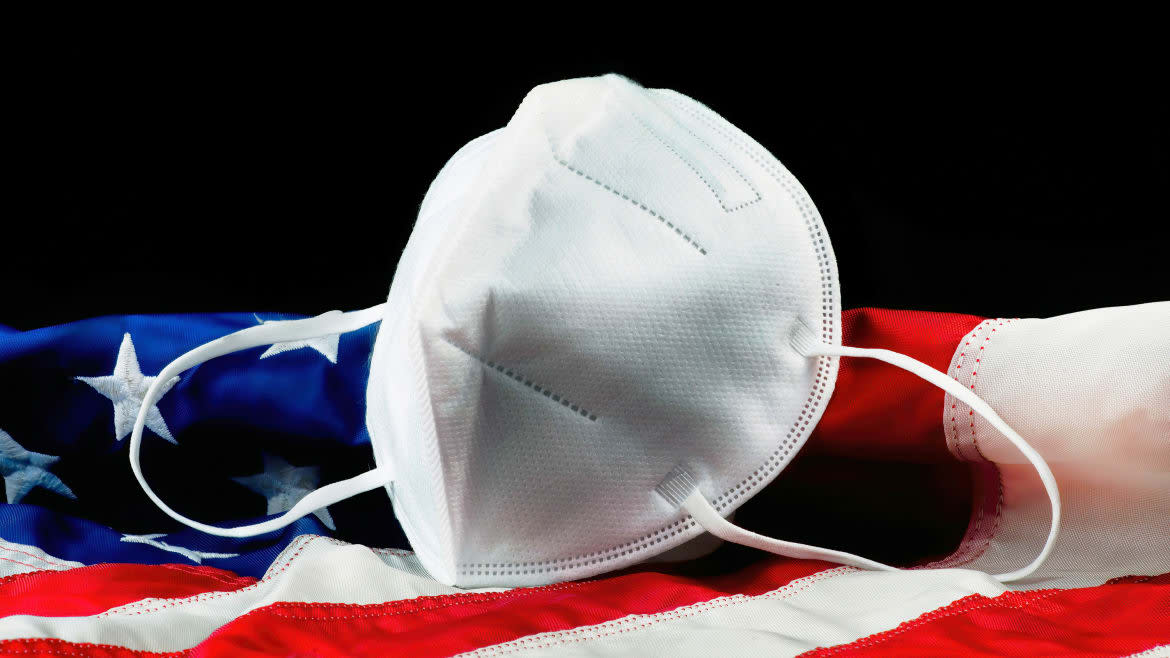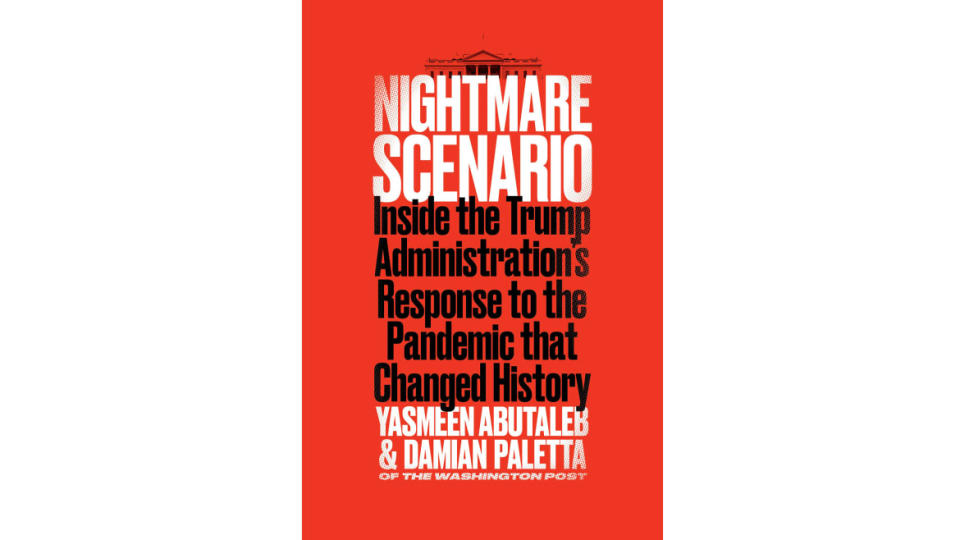That Time the White House Almost Sent Masks to All Americans

- Oops!Something went wrong.Please try again later.
By early March, with the coronavirus burrowed into the lungs of thousands of Americans, the mask crisis had turned into a global calamity. With simultaneous coronavirus outbreaks in dozens of countries, all of their governments were trying to procure masks. The World Health Organization said that mask production needed to increase by at least 40 percent to meet the global demand, but U.S. factories simply weren’t equipped to manufacture N95s on a mass scale. Most countries relied on Chinese products, and China had tight control over exports.
The U.S. decision to send masks to China in January had infuriated U.S. health-care workers, who by March were being advised to reuse N95 masks as much as possible and use homemade bandanas if they could not get medical-grade masks. (In normal times, N95s are discarded between patients.) The lack of guidance from the White House only exacerbated the situation. People were still binge-buying masks, willing to pay up to $200 or more for a pack of ten N95s. All of those factors caused severe shortages in hospitals, which were soon bidding against one another for the paltry available supply.
Deborah Birx, Anthony Fauci, and Robert Redfield knew that the public health measures in place were nowhere near adequate. Americans would do more to blunt the virus’s spread. So in March, they decided to begin writing guidelines, or a set of “best practices.” Some of the recommendations were stark, advising against gatherings in groups of more than ten and discouraging people from eating indoors at restaurants and bars. But others were weak. The guidelines advised people to stay home if they felt sick. When it came to personal hygiene, they listed just four items: wash your hands, avoid touching your face, sneeze or cough into a tissue or the inside of your elbow, and disinfect frequently used surfaces as often as possible. There was no mention of social distancing or mask wearing.
Matt Pottinger kept pushing, and some of the task force’s health officials began to support him, especially when the research began confirming suspicions that huge numbers of infected people without symptoms were spreading it to others. They would later find that at least half of the transmissions were from asymptomatic or pre-symptomatic patients, an astounding discovery. And new studies were becoming available that indicated that cloth masks worked, which meant the concerns over diverting masks away from those who really needed them was no longer an issue. With the doctors now convinced that masks worked, they knew it was time for a new strategy. If some sort of face covering would in fact help slow the virus’ spread, it could help alleviate the extraordinary pressure that health-care providers were facing in trying to treat the crush of patients. The doctors were going to strongly advocate for universal mask wearing.
It turned out that Robert Kadlec had been working on finding a way to produce enough cloth masks for every American. He had studied protection against respiratory viruses and aerosolized threats back in the 1990s, when he had been a career officer and physician in the U.S. Air Force. He began referencing decades-old studies showing that cloth masks provided some protection against aerosols that were 1 to 10 microns in size. (A human hair is about 100 microns.) The coronavirus was smaller than that, but the size range depended on whether the person wearing the mask sneezed, coughed, breathed, or talked. In February, he reached out to Jerry Cook, a vice president at the underwear manufacturer Hanes. Could the company repurpose some of its facilities to manufacture three-ply cloth masks for every household in America? he asked.
Cook contacted a handful of other underwear and garment manufacturers, and together they came up with a plan to manufacture 650 million three-ply masks over the next couple of months. The middle layer of the mask was impregnated with a microbiocide that was capable of killing the virus to further protect people in case they did come into contact with the virus. The goal was to send a pack of five masks to every household in the United States to make it easy for everyone to start wearing one.
In March, when Kadlec pitched his idea to other health officials, all of them endorsed it enthusiastically. They were already leaning toward encouraging Americans to wear face coverings. And more and more studies and anecdotal evidence were demonstrating their effectiveness. People could even make their own. Anything was better than nothing. Not everyone was fully convinced just yet. Redfield, who was adamant that the CDC was the gold standard of public health and should not be eclipsed, repeatedly issued the same warning. “We can’t get ahead of the data,” he’d say. (The CDC was conducting its own study on masks, and Redfield wanted to wait for its results.)
Kadlec’s initiative would have the advantage of ensuring that every American had a mask and remove any barriers to complying with the new guidance. And if the masks were coming from the U.S. government—and by extension the president—a debate over whether people should wear them might be avoided. Kadlec first took the idea to a unified command group at the Federal Emergency Management Agency, which unanimously endorsed it. The next step was for Alex Azar, Kadlec’s boss, to take the idea to the task force.
At a subsequent task force meeting, Azar modeled for the assembled group the Hanes mask. He was immediately ridiculed. Some task force members hated the fact that the mask was white. Health officials said they could have the masks made in other colors, but these were white because they would show dirt and remind people to wash them. (The company would eventually manufacture some skin-colored ones at Birx’s request.)
“We can’t send these out,” Domestic Policy Council director Joe Grogan told Azar. “It looks like you have a pair of underwear on your face.” Pete Gaynor, the FEMA administrator, who had already endorsed Kadlec’s initiative, joked that the mask looked like a jockstrap. Another official said it looked like a training bra. Marc Short, the vice president’s chief of staff, intervened in the midst of Azar’s presentation. He felt that the plan was half baked and that the answers to basic questions, such as how much the plan would cost and how the masks would be delivered, were unsatisfactory.
Short and other officials were also annoyed that Kadlec tried to purchase the masks without OMB’s signoff, and felt he was freelancing because he had already crafted an entire communications plan around the effort. (There were also concerns from some political officials that Trump would oppose having a U.S. Postal Service he despised playing an integral role by being responsible for shipping all of the masks.) Short went over to Pence. “This isn’t ready,” he told the vice president. “We’re pulling it off the agenda.” Grogan agreed.
Kadlec was dismayed when no one spoke up to defend the initiative or even devote a full discussion to it. He had prepared a full slideshow presentation to sell the task force on the idea and thought he had figured out how to market it to the skeptical White House. He had initially considered—and written up—one presentation that would effectively kiss up to the White House by making the initiative center around Trump and how much he cared about the American people. But then he had landed on something else to appeal to the White House’s sensibilities: that having everyone wear masks would allow the country to reopen economically and get people back to work. People would still need to take precautions such as social distancing, but wearing masks would assure them of some level of protection.
Kadlec never gave either presentation. Short yanked it off the agenda and made sure it never got back on.
The underwear and garment companies ultimately manufactured the 650 million masks as planned, enough for almost every American to have at least two. The health officials hoped that the initiative would send a clear message from the U.S. government: Wear a mask and protect your fellow neighbor; help the country get back to normal safely. But instead of being sent to households across the country, boxes and boxes of masks sat untouched for months. (HHS ended up sending many of them to health-care centers that served low-income patients and other places in need.)
The government could not reach a consensus on masks, and the bitter split on the task force worsened. Libertarians such as Marc Short and Chief of Staff Mark Meadows were adamantly opposed to actively promoting the use of masks, and face coverings began turning into a partisan Rorschach test of whether you were with Trump or against him.

Excerpted with permission from Nightmare Scenario: Inside the Trump Administration's Response to the Pandemic That Changed History by Yasmeen Abutleb and Damian Paletta, published by Harper, copyright 2021 by Yasmeen Abutaleb and Damian Paletta.
Get our top stories in your inbox every day. Sign up now!
Daily Beast Membership: Beast Inside goes deeper on the stories that matter to you. Learn more.

